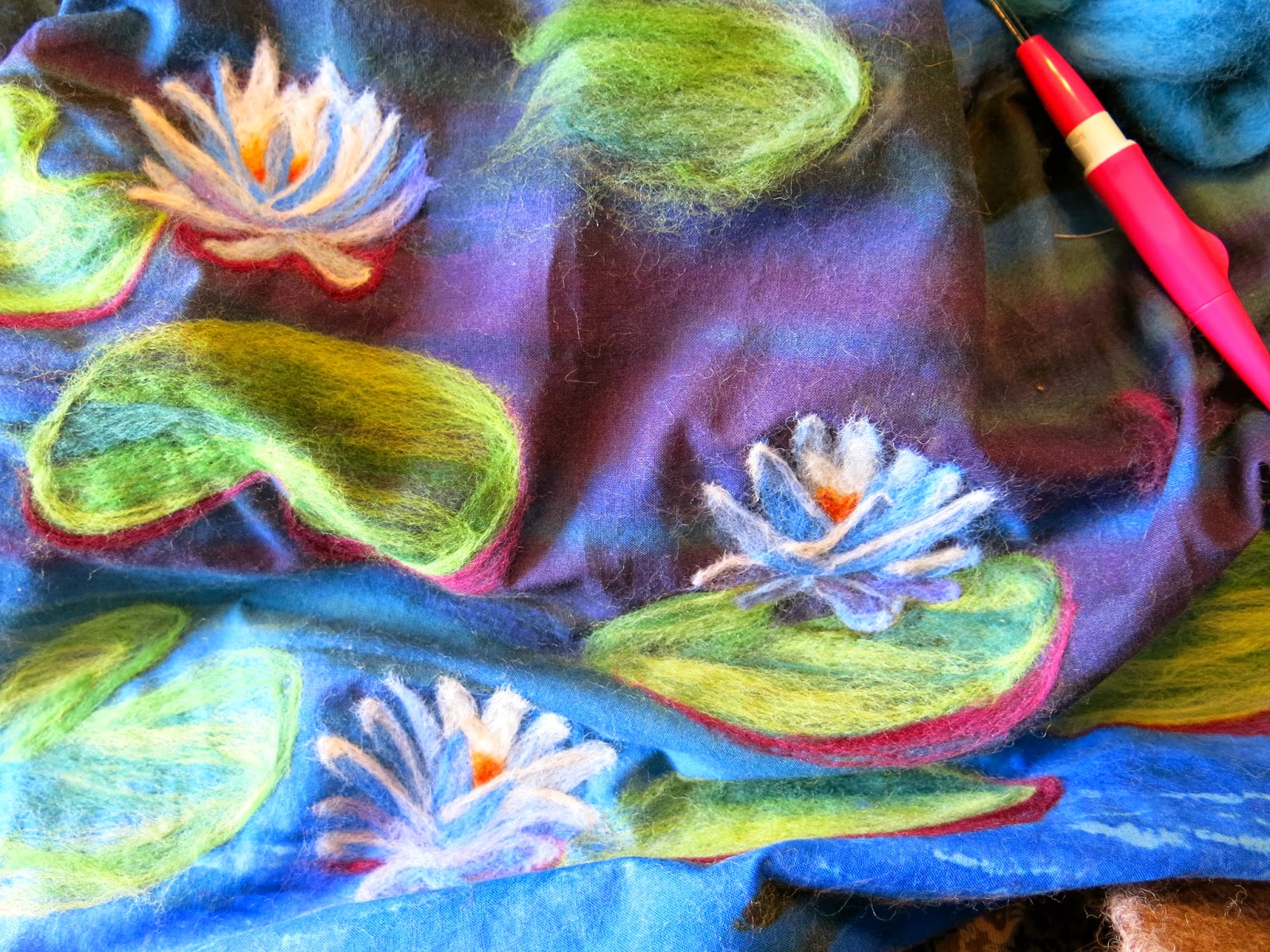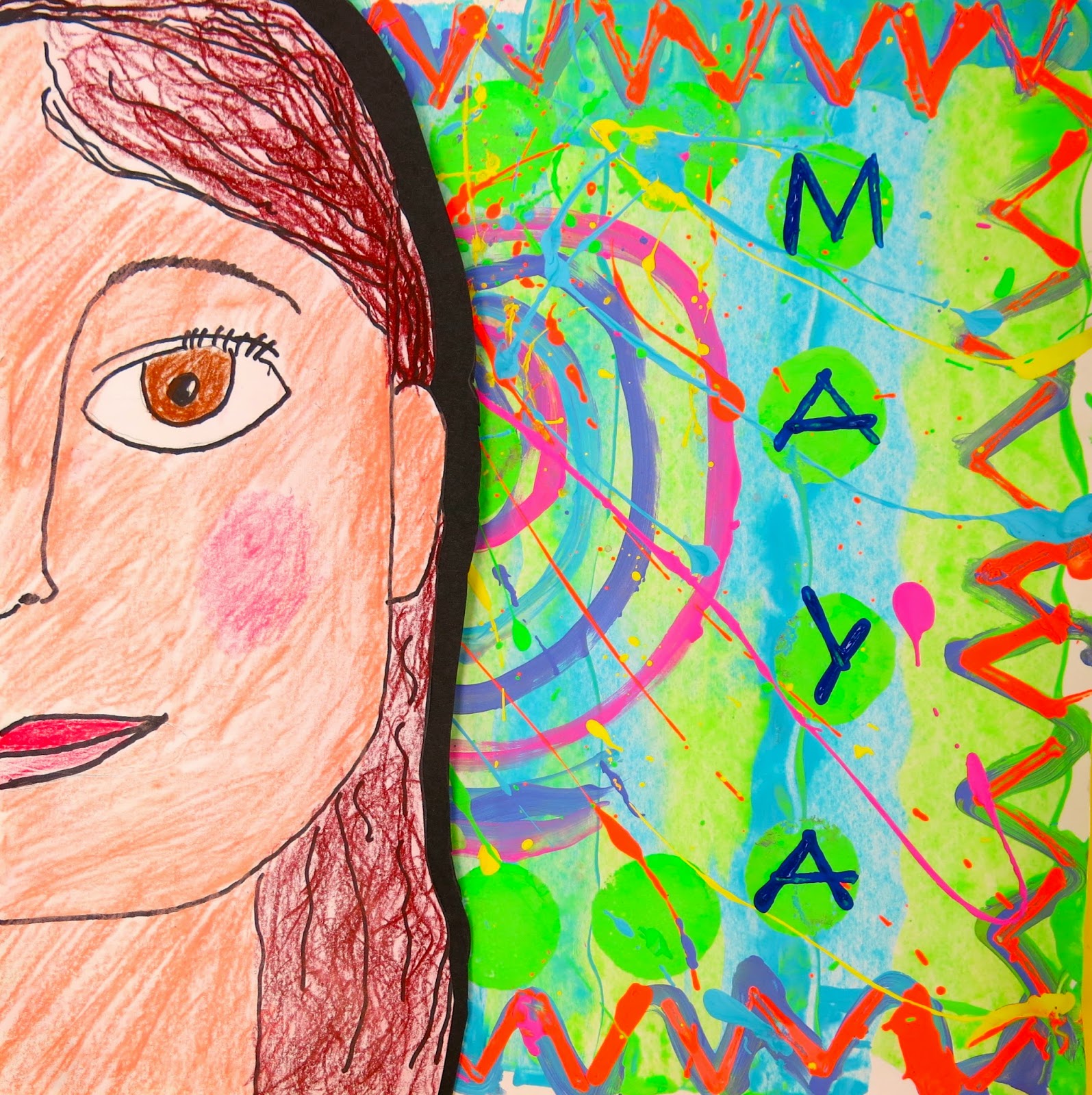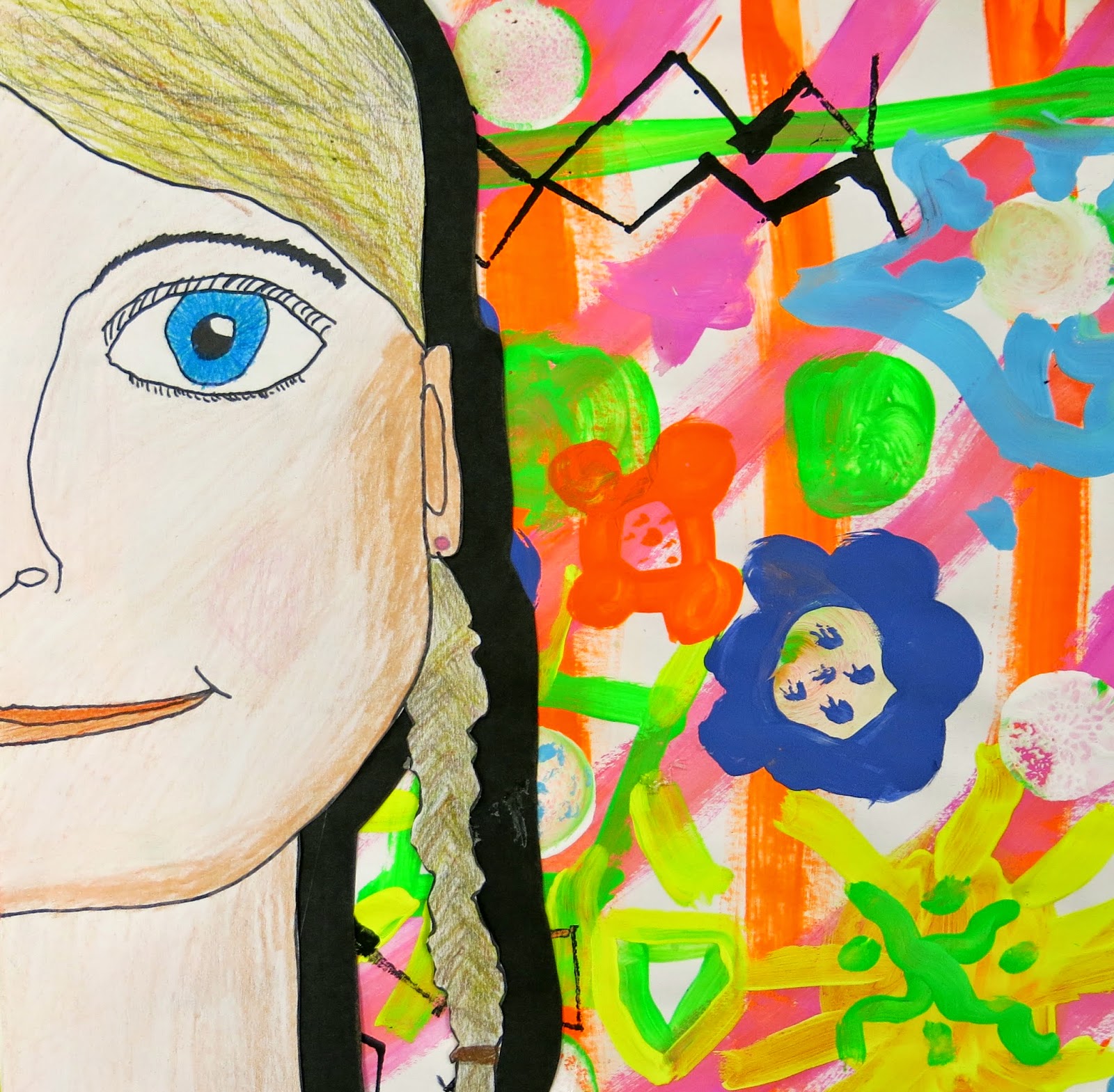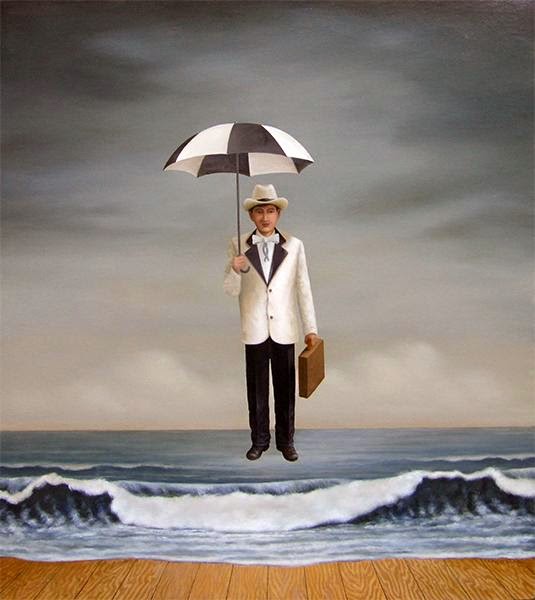But when you spend what feels like One Million Years on a dress, you kinda wanna share the daylights outta it, you know? Therefore, I present to you A Water Lilies Dress after Monet in a gazillion pics or less.
By now, if you've hung around this here blog for a wee while (and for that, I thank you kindly), you know I kinda have a thing for creating dresses after famous artists and their works. My most recent one was this Mondrian number but then there's also been a Starry Night, a Warhol frock, a couple of Kandinsky's, a Great Wave, a The Scream number, this Keith Haring jacket and skirt, and a Lichtenstein dealio. There are still a ton of artist-inspired dress ideas rolling around in my itty bitty head.
However, when I saw that watery print fabric, seen on the skirt portion of the dress, I immediately thought of Monet's water lilies. Now, I picked up two yards of that fabric and the violet and chartreuse well over a year ago. It wasn't until the last couple of weeks, when I've had One Million Snow Days (have you noticed that One Million is a theme in this here post?) that I had time to dive in and start stitchin'. One of the reasons I hesitated for so long was cuz I knew I'd not only have to stitch up the dress but then do some needle felting after the fact. That's a whole lotta work and I'm a whole lotta lazy. But with endless hours of free time on my hands, I decided to jump right in.
By the way, I used that lovely vintage Butterick for the dress. The pattern was super simple, especially the bodice as it had raglan sleeves, my personal fave. I also thought the wrapped waistband was clever and fun.

Once the dress was created, I started sketching the water lilies in chalk and commenced needle felting. If you've no clue what needle felting is all about, might I suggest you take a visit here and here.
Because there was so much color in the ensemble, I decided not to go with Monet's pink water lilies but the white ones. I was particularly inspired by this lovely painting of his.
I found that needle felting was a great medium for recreating the same look and feel as Monet's works. Sadly, my style is much too tight. I wish I could better immolate the looseness of Monet's work. Although, wasn't dude like near blind when he was painting these works? Note to self: next time, take out contacts. Except I'm using a tool with three razor sharp serrated needles and I'm near blind. SoooooOOOooo scratch that.
Most frequently asked question about Needle Felting:
How do you wash your clothing?
I don't. Hence the smell.
Okay, so sometimes I do. Since it's wool, which shrinks when agitated (that's how you do wet felting. And why your 100% wool sweater shrunk in the wash), I wash by hand in cold water with Woolite.
I dunno if I was successful or not but what I was trying to do was not simply place one million water lilies all over the skirt portion but to create a composition. That's why I started with the one lone flower and lily off to the (viewer) right and gradually angled upward toward your left. Make sense? Can you tell I had a plan in mind? I dunno if it worked or not. I do know that I'm so over needle felting that Ima gonna pretend it's just right.
I love a good wide belt. I thought I'd give you a sneak peak at the side view and the back of this dress. I think that band is one of my fave things about this pattern. I can't decide if I love the neckline curve detail. It's kinda growing on me.
With the art teacherin' conference coming at the end of this month (OMG, so soon! Yikes! I've got four presentations that I'd love you to attend, y'all. More details on those dates and times coming soon. This blog post has enough going on already), I knew I'd wanna wear this dress. However, I'm kinda cold natured so I thought I'd want a jacket to go with this number. In the "re-do me" portion of my closet (Yes there is such a thing. No, I never ever get rid of anything.), I found this Target jacket that I'd scooped up on super sale a while back. Like, I'm talking 4 years ago a while back. I'd never worn the the thing because it looked like this:
I loved the buttons, the gathered fabric at the collar and opening and those presh sleeves. I have ALWAYS HATED that length. Every time I put it on, I found it so unflattering. But the color matched my dress's bodice perfectly. So I decided to make a bolero outta the thing. (P.S. Welcome to my uber messy sewing room! There's so much fabric, books and crapola in that room that I'm just waiting for the day that the weight of all my stuff sends me crashing thru to the dining room). 

Using a beautiful platter that a sweet teacher buddy bought for me (thank you, Heather!), I traced the curve of the plate. The other bolero I made had a similar curve to the edge and I really liked that. It was the inspiration for the bottom edge of this bad boy.
I absolutely LOVE short jackets because they look so vintage. And they still showcase your outfit underneath. So I was pretty stinkin' happy with how this simple lil alteration turned out.
And I totally dig it with my dress! It matches those shadows in the water lilies pretty well, says me. Ima totally gonna rock this out in New Orleans at the art teacherin' conference where I plan to hang with my brand new buddy...Tim Gunn!
So, sadly, I've been keeping secrets from you. A while back, I had the incredible opportunity to spend a lovely hour on the phone just chatting it up with the one and only Tim Gunn. I interviewed him for SchoolArts Magazine (thank you, Nancy Walkup!) and you can read the article here. There's actually much more to the interview so you can bet I'll be sharing the entire interview right here just for you very soon. I'm super excited to attend Tim's sessions at the conference. Ima be all like...
"Hey, Tim! 'Member me?" And y'all know dude's much to nice to say no. Let's just hope he doesn't secretly file for a restraining order. Again.
And das all, folks! A Monet's Water Lilies Dress and a Jacket Refurb.
By the way, if you need some AMAZING Monet art lessons, check out my buddy Laura's blog over at Painted Paper. So much Monet goodness, ya'll!







































oil%2Bwood%2B2013.JPG)
%2Boil%2Bon%2Bwood%2B2013.JPG)































